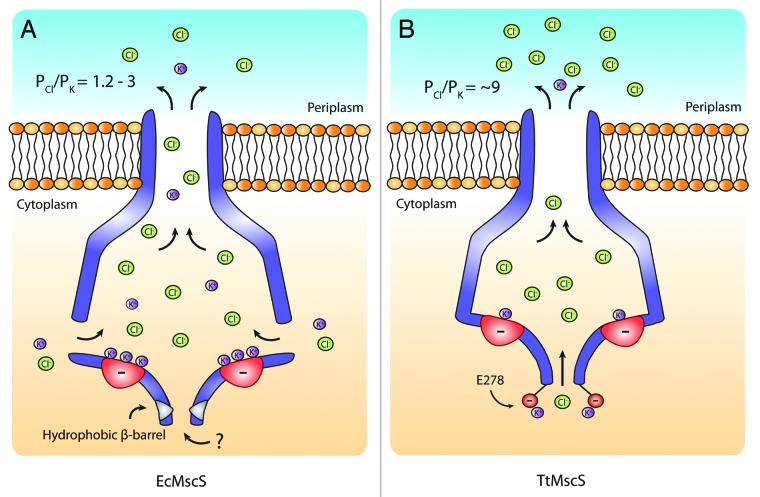Figure 5. Graphic illustration of the proposed selectivity mechanisms of E. coli MscS and T. tengcongensis MscS. (A) An electronegative region centered around E187 and E227 on the floor of the cytoplasmic domain ‘traps’ cations resulting in easier transit for anions. (B) A residue on the outside of the β-barrel ‘E278’ likely traps cations making an environment conducive to anion conduction. This is in addition to an electronegative region on the floor of the cytoplasmic domain that likely ‘traps’ permeating cations in a similar manner to EcMscS, which results in higher anion selectivity of TtMscS compared with EcMscS (Fig. 4).

An official website of the United States government
Here's how you know
Official websites use .gov
A
.gov website belongs to an official
government organization in the United States.
Secure .gov websites use HTTPS
A lock (
) or https:// means you've safely
connected to the .gov website. Share sensitive
information only on official, secure websites.
